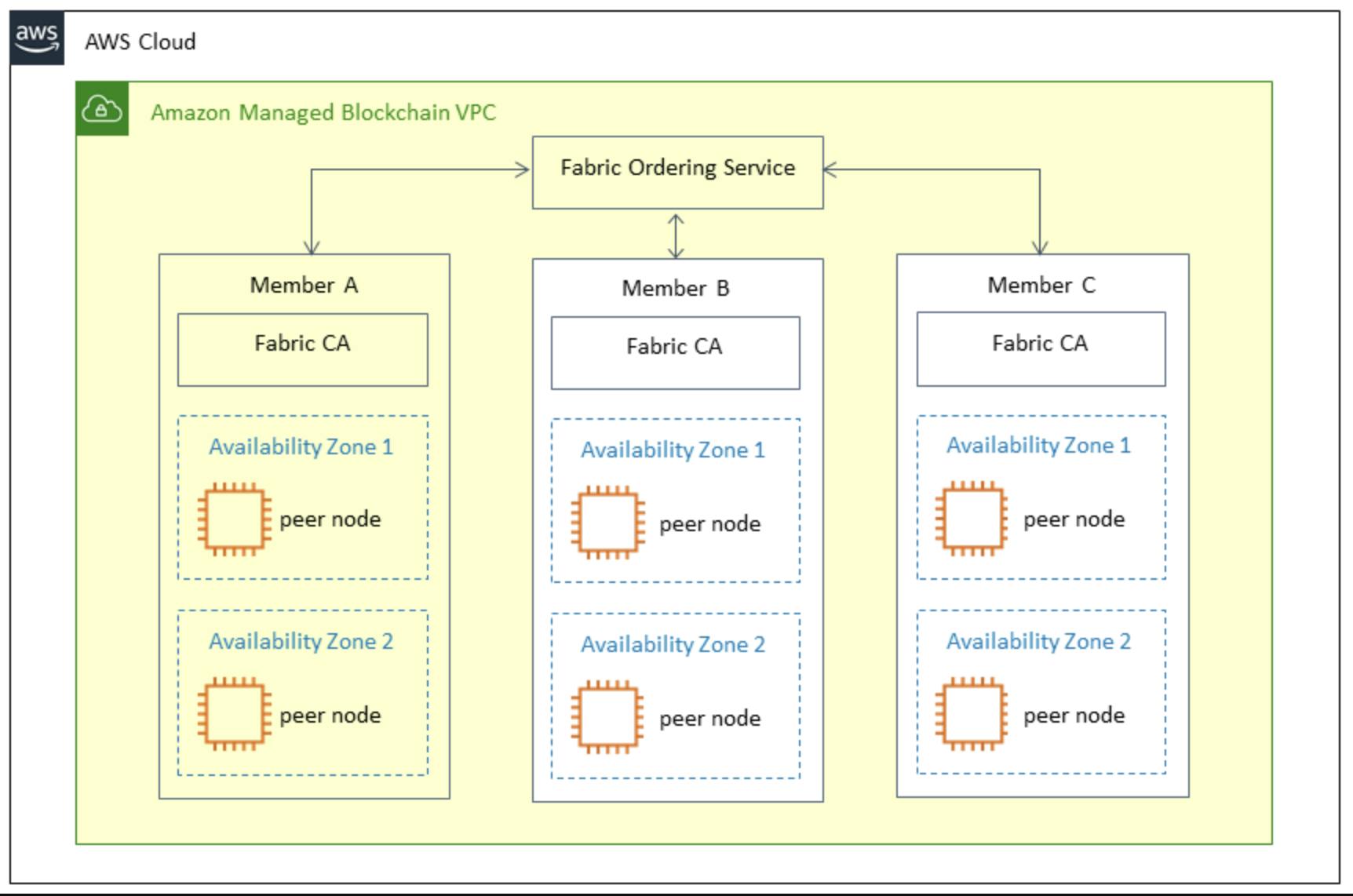Amazon Managed Blockchain series: Part One- What is Blockchain?
In part one of this series we'll explore about blockchain, and AWS's contribution to the blockchain ecosystem, through Blockchain as a Service.
Hey lovelies!!! I hope you had an awesome Christmas celebration, and ushered in 2024 gracefully!!! As usual, I'm here to spread the gospel of AWS, as we explore all the offerings AWS has to offer!
So since last year I have been reading up a lot on blockchain technology, which I really find fascinating! And which I would love to share with you guys, and then we go through how to delve into the world of blockchain, with AWS offering a much more friendlier approach! (trust me blockchain has a quite steep learning curve!)
Okay let's goooo!!

What is Blockchain?

Blockchain, in simple terms, is a system where one can send digital assets to another person, without an intermediary. As simple as that. Now let's say I've got a million dollars and I would like to send it to you, right? Now imagine the current banking system. The bank would first of all freeze these assets, till I show evidence where the money came from etc, and so by the time the money gets to you, a century will have passed right?
Now with blockchain, I can send to you digital assets worth the million dollars to you within minutes, no matter where you are, without an intermediary (bank). And without hefty transaction costs!
So why blockchain? Blockchain is currently the future of finance, and not just finance, but a whole new concept of decentralization; Having to do things without an intermediary, having to own your data, etc!.
So just as we have normal applications built and running on top of servers, now we have applications running on top of blockchain, called decentralized applications (dapps). But before we get into that, lets first have a friendly introduction to how blockchain works!!
Understanding the Magic Behind Blockchain
At its heart, a blockchain is a ledger that's not just read but also written by many people at the same time, spread all over the world. This isn't any ordinary ledger, though; once something is written on its pages, it can't be erased or changed, making every word trustworthy.
To fully understand how this system works, imagine a company that has decided to revolutionize the way it tracks and manages expenses by using the blockchain's ledger system. This ledger isn't hidden away in a finance department's vault but is duplicated across multiple computers, or "nodes," in the company's network. Each department, from marketing to R&D, operates a node, contributing to a transparent, tamper-proof system for managing expenses.
The Expense Transaction
Let’s say the marketing department wants to purchase new software. Here’s how it goes down:
Pre-Transaction Agreement: Before anything is bought, all nodes in the company's network have a synchronized record of the current budget allocations. This ensures every department agrees on how much money is available to spend.
Submitting the Expense: The marketing department submits a transaction to the ledger, detailing the cost of the software. This transaction is like a request that says, "We want to allocate X amount of our budget to purchase this software."
Broadcast and Verification: This request isn’t hidden. It’s broadcast to all nodes, each representing different departments. They review the transaction to ensure it matches the marketing department's budget and follows company policies.
Reaching Consensus: For the expense to be approved, a consensus must be reached among the nodes. This doesn’t mean every single node has to agree, but a majority need to confirm the transaction is valid based on the rules established by the company (like having enough budget and adhering to spending policies). This process ensures that no single entity controls the decision, promoting fairness and transparency.
Finalizing the Transaction: Once consensus is reached, the transaction is added to the ledger, updating the company's expense records. The marketing department gets the green light to proceed with their purchase. This updated record is now immutable; it cannot be altered or deleted, ensuring an accurate and unchangeable history of transactions.
In this scenario, the nodes serve two crucial functions: they verify transactions to prevent fraud or error (like double-spending a budget) and they store a copy of the ledger for redundancy and security. Each node acts as a checkpoint, making sure every transaction follows the rules. It's a democratic system where consensus reigns, ensuring every department plays a part in maintaining the integrity of the company’s financial records.
So why are we talking about this? Because there are two blockchain systems which AWS currently supports by providing managed nodes; Ethereum and Bitcoin.
To get a deeper but friendly dive into blockchain concepts, I found this really nice demo from Anders Brownworth, accompanied by this blockchain demo.
So why should I care about AWS on Blockchain?
Now normally, just like how AWS comes in to help you acquire resources without having to set up the underlying infrastructure, the same can be said when it comes to blockchain. Let's say you would like to set up a node in say the Ethereum network, so that it can help in processing all the transactions, then you gain money in return as an incentive for setting up the node. The first option would be to buy the hardware needed, taking into considerations the hardware requirements such as at least 16 GB of RAM, a multi-core processor, minimum 500 GB storage space, preferably an SSD for faster read and write operations. You'd also need really fast internet bandwidth, amongst other considerations. Also you'd have to factor in the fact that your node should have as minimal downtime as possible!!
So if you'd like to avoid the headache of having to set up your own infrastructure, the next option is now using cloud-based options!!! Hence introducing Amazon Managed Blockchain (AMB)
With the Amazon Managed Blockchain service, you can easily set up public blockchain nodes on the Ethereum and Bitcoin network. For those projects where privacy and control are paramount, the AMB Hyperledger Fabric is used to create private blockchain networks.
Okay so part one of this series was to get a friendly overview of blockchain, and connect to how AWS fits into the picture!! In the next part of the series, we'll set up an Ethereum node, and also explore using token based access to make Ethereum API calls to Ethereum nodes!!! So that you can get to see how, from finance to supply chain, blockchain is revolutionizing the industry, and how AWS has chipped in to help an average user be able to utilize this awesome technology, without having to worry (as usual) about the underlying infrastructure!!!

As usual, stay safe, and see you soon anon!! Thank you for reading my article .
